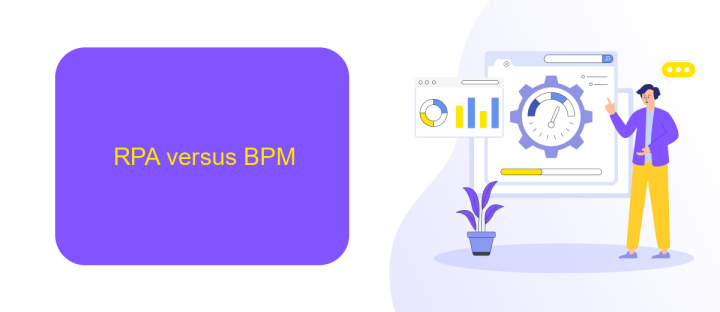UiPath Vs Camunda
In the rapidly evolving landscape of business process automation, selecting the right platform is crucial. UiPath and Camunda are two prominent contenders, each offering unique strengths and capabilities. This article delves into a comparative analysis of UiPath and Camunda, exploring their features, use cases, and performance to help businesses make an informed decision on which tool best suits their automation needs.
Introduction
In today's rapidly evolving business landscape, automation has become a key driver for efficiency and innovation. Two prominent platforms that facilitate automation are UiPath and Camunda. While both offer robust solutions, they cater to different needs and scenarios, making it essential to understand their unique features and capabilities.
- UiPath: Primarily focuses on robotic process automation (RPA) to streamline repetitive tasks and integrate various applications seamlessly.
- Camunda: Specializes in business process management (BPM) and workflow automation, providing a more comprehensive approach to managing complex business processes.
Choosing the right platform depends on your specific requirements. UiPath excels in automating individual tasks, whereas Camunda is ideal for orchestrating end-to-end business processes. For companies looking to integrate these platforms with other tools and services, solutions like ApiX-Drive can simplify the integration process, ensuring a smooth and efficient workflow. Understanding the strengths and limitations of each platform can help you make an informed decision that best suits your business needs.
RPA versus BPM

When comparing RPA (Robotic Process Automation) and BPM (Business Process Management), it’s essential to understand their core differences and applications. RPA focuses on automating repetitive tasks by mimicking human actions, making it ideal for processes that require minimal decision-making. UiPath, a leading RPA tool, excels in streamlining tasks such as data entry, invoice processing, and customer service interactions. It enhances efficiency by reducing the need for human intervention in mundane tasks, thus allowing employees to focus on more strategic activities.
On the other hand, BPM is a holistic approach to optimizing and managing an organization’s processes. Camunda, a prominent BPM platform, provides tools for modeling, executing, and monitoring business processes. It ensures that workflows are efficient, compliant, and adaptable to changes. While RPA handles specific tasks, BPM oversees entire processes from start to finish. Integrating tools like ApiX-Drive can further enhance both RPA and BPM by facilitating seamless data flow between different systems, ensuring that automated tasks and business processes are well-coordinated and efficient.
UiPath overview

UiPath is a leading Robotic Process Automation (RPA) platform designed to help businesses automate repetitive tasks and streamline workflows. With its user-friendly interface and extensive capabilities, UiPath enables companies to improve efficiency, reduce operational costs, and enhance accuracy in various business processes.
- Ease of Use: UiPath offers a drag-and-drop interface that allows users to design automation workflows without extensive programming knowledge.
- Scalability: The platform can scale from small projects to enterprise-wide automation initiatives, supporting a wide range of industries and use cases.
- Integration: UiPath integrates seamlessly with numerous applications and services, including popular tools like ApiX-Drive, which simplifies the process of connecting different systems and automating data transfers.
- Security: UiPath ensures data security and compliance with robust encryption standards and access controls.
- Community and Support: UiPath boasts a large, active community and provides comprehensive support resources, including tutorials, forums, and certification programs.
In summary, UiPath stands out as a versatile and powerful RPA solution that caters to the diverse needs of modern businesses. Its ability to integrate with various tools and services, such as ApiX-Drive, further enhances its utility, making it an invaluable asset for organizations looking to optimize their operations through automation.
Camunda overview

Camunda is an open-source platform designed for workflow and business process automation. It provides a robust framework for modeling, executing, and optimizing business processes, making it a popular choice for organizations seeking to streamline their operations.
One of the key features of Camunda is its flexibility and scalability. It can be integrated with various systems and applications, allowing businesses to create complex workflows that span multiple platforms. This adaptability ensures that Camunda can meet the needs of both small enterprises and large corporations.
- Open-source and highly customizable
- Supports BPMN, CMMN, and DMN standards
- Scalable architecture suitable for large-scale deployments
- Comprehensive REST API for integration with other systems
- Rich set of tools for monitoring and optimizing processes
Camunda's integration capabilities are further enhanced by services like ApiX-Drive, which simplify the process of connecting Camunda with other applications. ApiX-Drive provides a user-friendly interface for setting up integrations, reducing the technical barrier for businesses looking to automate their workflows efficiently.
Comparison and conclusion
When comparing UiPath and Camunda, it's essential to consider their primary use cases and strengths. UiPath excels in robotic process automation (RPA), providing a user-friendly interface and a wide range of pre-built activities that streamline automation tasks. Its strong integration capabilities with various applications and systems make it a versatile tool for automating repetitive tasks across different platforms. On the other hand, Camunda focuses on business process management (BPM), offering a robust platform for modeling, executing, and monitoring business processes. Camunda's open-source nature and its support for BPMN, CMMN, and DMN standards make it a flexible choice for organizations looking to implement complex workflows and decision-making processes.
In conclusion, the choice between UiPath and Camunda largely depends on the specific needs of your organization. If your primary goal is to automate repetitive tasks with minimal setup, UiPath is the better option. However, if you require a comprehensive BPM solution with advanced process modeling and execution capabilities, Camunda is the way to go. Additionally, integrating either tool with other services can further enhance their functionality. For instance, using ApiX-Drive can simplify the integration process, allowing seamless data transfer and synchronization between different systems and applications, ultimately improving efficiency and productivity.


FAQ
What are the primary differences between UiPath and Camunda?
Can UiPath and Camunda be used together?
Which platform is better for non-technical users?
How do UiPath and Camunda handle scalability?
What services can help with the integration and automation setup for UiPath and Camunda?
Do you want to achieve your goals in business, career and life faster and better? Do it with ApiX-Drive – a tool that will remove a significant part of the routine from workflows and free up additional time to achieve your goals. Test the capabilities of Apix-Drive for free – see for yourself the effectiveness of the tool.

